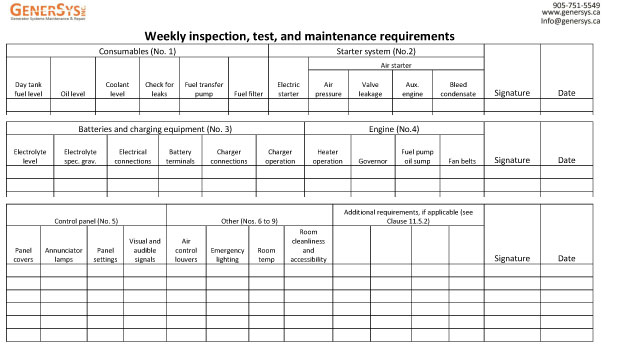3. Batteries and charging equipment:
(a) Inspect all battery cells for correct electrolyte fill level (applicable to vented or flooded lead-acid batteries only).
(b) Test all battery cells for correct electrolyte specific gravity (applicable to vented or flooded lead-acid batteries only).
(c) Inspect electrical connections for tightness and evidence of corrosion.
(d) Inspect battery for cleanliness and dryness between terminals.
(e) Inspect charger electrical connections for cleanliness and tightness.
4. Engine:
(a) Test lubricant and/or coolant heaters for proper operation.
(b) Inspect governor control linkages and oil level (if applicable).
(c) Inspect fuel pump oil sump (if applicable).
(d) Inspect fan belts for correct tension and wear.
5. Control panel:
(a) Inspect control panel covers for security.
(b) Test annunciator lamps to confirm that they are operational.
(c) Inspect control panel settings (ensure that the unit is ready for automatic start up).
(d) Test remote visual and audible trouble signals at the building fire alarm panel.
6. Inspect air control louvre settings to ensure proper operation.
7. Test emergency lighting unit(s).
8. Verify whether room temperature is above 10 °C.
9. Inspect generator and transfer switch room(s) for cleanliness and accessibility to all components of the emergency system.
10. Correct all defects found during inspections and tests.
11. Record all inspections, tests, and corrective actions in the log (see Clause 11.5.3).

